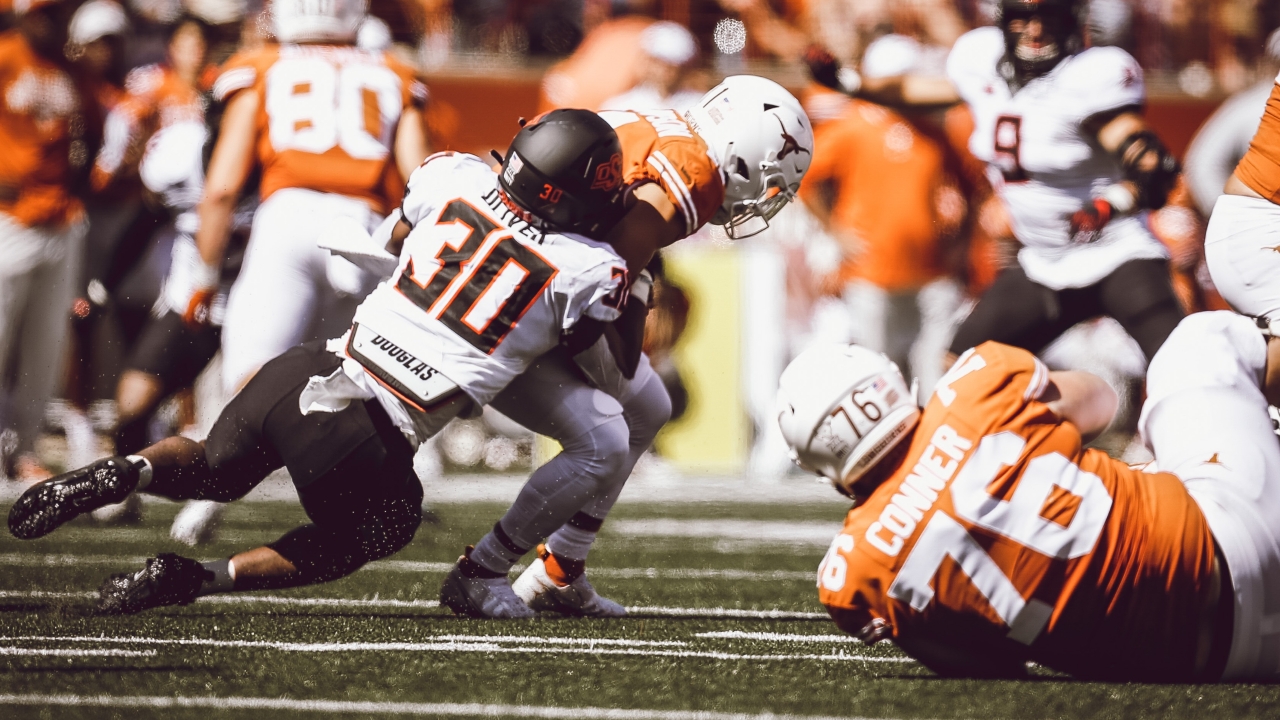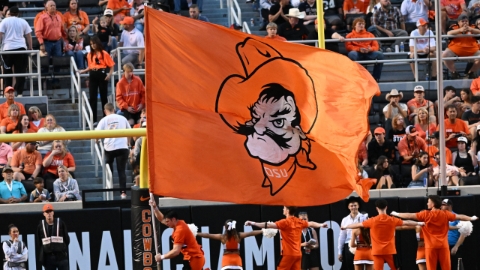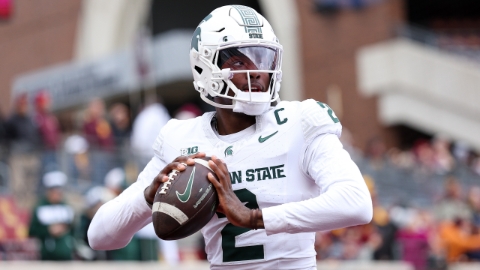NCAA Football Rules Committee Looking to Shorten Games, Exposure to Injury

STILLWATER – The NFL Combine is not the only football gathering in Indianapolis this week. While 324 prospects for the NFL Draft in April make their way to Lucas Oil Stadium to show their talents, the NCAA Football Rules Committee in meeting at the NCAA headquarters discussing how they can the teammates they left behind a little safer by giving them less exposure to contact. The two major rule proposals that the committee is considering have to do with shortening games. This time it is not to make games more compact and television friendly, but to make the game more player friendly.
The committee is looking at the numbers from the past 15 seasons at how many plays have taken place in games, not just from scrimmage, but also field goals and PAT, kickoffs, and they are hoping to get a count on penalties where the play was stopped but there was still contact at the snap. Forget the terms snaps or reps, the committee is examining exposures as in how exposures there are to contact in a game.

In 2006, college football operated with two new rules. The clock started on kickoffs when the kicker toed the ball and not when the receiver started a return. Then the clock was started on the referee’s ready for play signal versus at the snap. Those two rules shortened games on average 15 minutes, 14 plays, and there was a drop in points scored by 5.07 a game. In 2007 the rules were change back.
The rules the committee is looking at this spring are treating incomplete passes just as they would run plays out-of-bounds and the clock would start on the ready signal by the referee instead of the next snap. The other rule is one that really identifies college football over the NFL. The clock has always stopped after a first down until the ready for play signal is given. This was to allow the chains to move and get set. This change would certainly change the way coaches would call plays in a late game situation. The committee is considering changing the rules, but having them go back in the final two-to-five minutes of a half or game.
One way to beat the system and continue to push a team’s offensive play count is to run tempo or even what Oklahoma State calls turbo, an ultrafast system that was devised by then offensive coordinator Mike Yurcich and head coach Mike Gundy back in the summer of 2013.
Pokes Report went back and examined Oklahoma State’s play count in the past three seasons.
| Season | Games | Offensive Plays | Avg. per Game | Defensive Plays | Avg. per Game | Total Plays | Avg. per Game |
| 2019 | 13 | 924 | 71.1 | 926 | 71.2 | 1850 | 142.3 |
| 2020 | 11 | 849 | 77.2 | 710 | 64.5 | 1559 | 141.7 |
| 2021 | 14 | 1067 | 76.2 | 909 | 64.9 | 1876 | 141.1 |
| Total (3 seasons) | 38 | 2840 | 74.7 | 2545 | 66.9 | 5385 | 141.7 |
My best uess is that the rules committee would like to eliminate roughly 5-7 plays a game and have an estimated 135 exposures or plays a game. We’ll see what they come up with.




